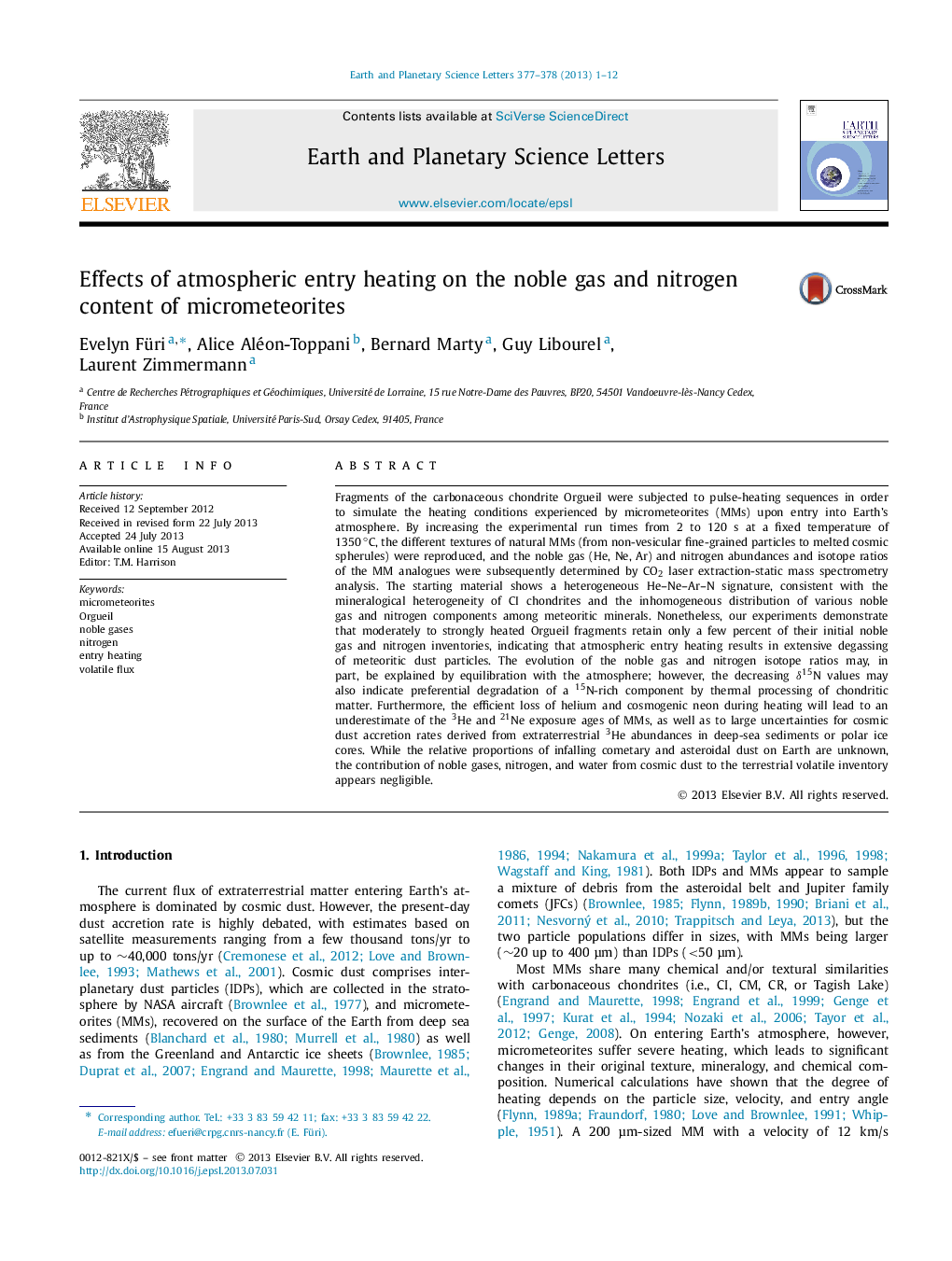| کد مقاله | کد نشریه | سال انتشار | مقاله انگلیسی | نسخه تمام متن |
|---|---|---|---|---|
| 6429990 | 1634778 | 2013 | 12 صفحه PDF | دانلود رایگان |
- Fragments of Orgueil were pulse-heated to simulate heating of micrometeorites.
- Noble gas and nitrogen characteristics of the experimental charges were determined.
- Small Orgueil fragments record highly variable He-Ne-Ar-N signatures.
- Atmospheric entry heating leads to extensive degassing of extraterrestrial dust.
- Cosmic dust is not a major source of He, Ne, water, and nitrogen for Earth.
Fragments of the carbonaceous chondrite Orgueil were subjected to pulse-heating sequences in order to simulate the heating conditions experienced by micrometeorites (MMs) upon entry into Earthʼs atmosphere. By increasing the experimental run times from 2 to 120 s at a fixed temperature of 1350â°C, the different textures of natural MMs (from non-vesicular fine-grained particles to melted cosmic spherules) were reproduced, and the noble gas (He, Ne, Ar) and nitrogen abundances and isotope ratios of the MM analogues were subsequently determined by CO2 laser extraction-static mass spectrometry analysis. The starting material shows a heterogeneous He-Ne-Ar-N signature, consistent with the mineralogical heterogeneity of CI chondrites and the inhomogeneous distribution of various noble gas and nitrogen components among meteoritic minerals. Nonetheless, our experiments demonstrate that moderately to strongly heated Orgueil fragments retain only a few percent of their initial noble gas and nitrogen inventories, indicating that atmospheric entry heating results in extensive degassing of meteoritic dust particles. The evolution of the noble gas and nitrogen isotope ratios may, in part, be explained by equilibration with the atmosphere; however, the decreasing δ15N values may also indicate preferential degradation of a 15N-rich component by thermal processing of chondritic matter. Furthermore, the efficient loss of helium and cosmogenic neon during heating will lead to an underestimate of the 3He and 21Ne exposure ages of MMs, as well as to large uncertainties for cosmic dust accretion rates derived from extraterrestrial 3He abundances in deep-sea sediments or polar ice cores. While the relative proportions of infalling cometary and asteroidal dust on Earth are unknown, the contribution of noble gases, nitrogen, and water from cosmic dust to the terrestrial volatile inventory appears negligible.
Journal: Earth and Planetary Science Letters - Volumes 377â378, September 2013, Pages 1-12
